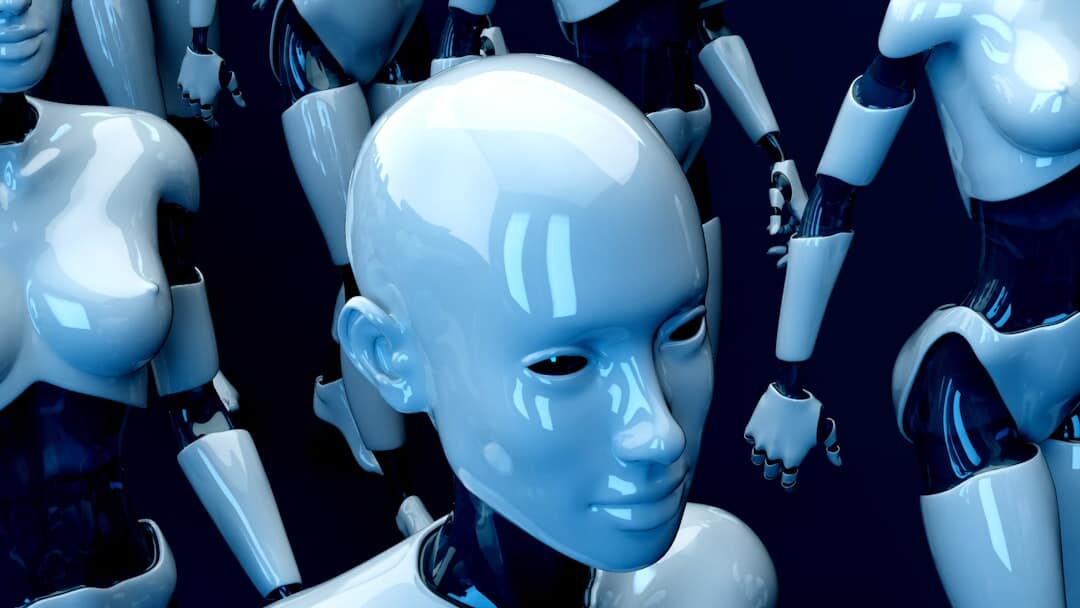Ever been in a discussion about “AI agents vs assistants” and felt unsure about the details? You might have asked yourself about the differences between the tech that powers your smart speaker and software designed for more complex tasks. Both fall under the AI umbrella, but the key distinction lies in their capabilities for autonomous decision-making.
AI assistants are like helpful companions, always ready to follow your commands. However, AI agents are more like strategists, addressing challenges on their own to achieve their set goal. Understanding how AI agents vs assistants apply in real-world scenarios can be intricate.
Table Of Contents:
- Defining the Roles of AI Assistants
- Understanding the Proactive Capabilities of AI Agents
- Key Differences: AI Agents vs Assistants
- AI Applications in Various Industries
- The Risks of AI Agents vs Assistants
- Conclusion
Defining the Roles of AI Assistants
AI assistants use natural language processing (NLP) to respond to user input, providing answers or carrying out instructions. These digital helpers, such as Amazon’s Alexa or Apple’s Siri, excel within defined boundaries. They function exceptionally well for many different tasks people use regularly.
Initially, most virtual assistants operated with basic commands and responses. Today, many AI assistants use large language models (LLMs) that provide responses, options, and actions based on your specific question.
How AI Assistants Help Streamline Simple Tasks
Suppose you need to know, “What’s the current traffic like near me?” You simply pose the question to your digital assistant. It retrieves and relays that traffic information, helping you plan your day better without human intervention.
Here are some primary ways AI assistants work:
- AI assistants enhance the user experience by providing immediate answers to questions.
- AI tools, including AI assistants, reduce mundane tasks by streamlining processes. This allows employees to focus on higher-level thinking and analysis.
- Over time, AI assistants adapt based on user habits and feedback, aiming to deliver personalized experiences.
These digital helpers react to specific tasks, positioning AI assistants in more reactive roles. This functionality shows the reliance of these digital assistants.
Limitations of AI Assistants
Although AI assistants follow simple tasks, they can’t perform more complex actions without continuous input. Without help, assistants are unable to complete more tasks.
AI assistants can generate and even review data from an Excel spreadsheet, but they might not understand a minor change in wording or more complicated requests. It highlights that an AI assistant requires precise instructions to function correctly. An AI assistant must have these directions to continue working to help the user.
Understanding the Proactive Capabilities of AI Agents
The saying, “A little less talk, a little more action, please,” captures the essence of how AI agents operate. An AI agent works for the user (or another system) by independently performing tasks, using available tools to achieve its goals.
They function as specialists within a team, helping optimize your work output. Consider sectors like finance and healthcare. Now envision how your marketing department could benefit from similar team dynamics, leading to better outputs for your users.
AI Agents Lead With Action
With a single starting instruction, AI agents act autonomously, without constant input. After assessing given instructions, AI agents break down tasks into smaller, manageable steps, which are then executed using existing workflows or by creating entirely new ones.
AI agents are utilized within businesses for various functions, including software development, automating IT tasks, code generation, and acting as chat-based support. Here is how AI Agents work:
- Developing a plan for the project.
- Acquiring necessary information for response formulation.
- Exploring methods for improved learning in future scenarios.
Autonomy and Decision Making
AI agents combine various capabilities for an efficient system, avoiding bottlenecks caused by disconnected components. Their integration with applications, data sources, and other models enhances their success by minimizing barriers. AI Agents exhibit the ability to make decisions and act in complex scenarios.
Some agents, like Anthropic’s Claude, can even control a computer. Agents perform actions like clicking and typing as directed to complete various steps.
Key Differences: AI Agents vs Assistants
Distinguishing between AI agents vs assistants isn’t always straightforward. It boils down to understanding their primary function and how they process information. This fundamentally shapes their improvement process.
Consider the comparison in the table below.
| Feature | AI Assistant | AI Agent |
|---|---|---|
| Nature | Reactive | Proactive |
| Dependencies | Needs continuous prompts | Acts on its own with an initial “ask” |
| Functionality | Specific requests | Manages wide-ranging functions |
| User Level | Helpful for every user | Best suited for organizations |
| Examples | Siri and Alexa | Automated trading or cybersecurity tools |
The learning methodology of AI significantly influences the capabilities of these tools and applications. Now, let’s examine this aspect more closely.
Learning and Adaptation in AI Systems
AI assistants remember your current interactions but don’t retain long-term details to inform future requests. Newer models seek to strengthen the cognitive connections that guide future functionality, learning through operation and expanding across systems. It may potentially challenge existing applications.
Agents remember previous tasks and interactions, striving for continuous improvement. With “stored recall,” AI agents retain past experiences to enhance future performance. Adapting through learning, agents modify their behavior based on observed outcomes.
Blending AI Roles for Advanced Solutions
As we know, AI agents are dedicated to completing tasks without needing step-by-step instructions. AI assistants perform best when interacting directly with users in clear, straightforward ways.
Together, they offer stronger, user-friendly technological solutions for businesses. Combining them leads to better results and a strong team.
AI agents address defined tasks or complex problems, while AI assistants excel in understanding and communicating through human language. So this shows how the use of AI agents complements the role of assistants.
AI Applications in Various Industries
Across sectors like banking, retail, healthcare, and manufacturing, AI technology enhances business capabilities for user engagement. From improving personal use and customer experience to enhancing safety, AI systems manage complex projects effectively.
Looking ahead, this integration is expected to grow as AI agents adapt rapidly to align with company-specific processes. The continued growth of AI agents looks promising.
AI in Customer Experience and Marketing
In marketing and customer service, AI assistants are enhancing how they cater to today’s online shoppers, providing support year-round. From basic support to detailed product information and guidance, users now expect immediate customer service that’s personalized to their buying history.
With agent technology managing these front-end inquiries, companies saw increased sales on Cyber Monday and Black Friday. AI agents handled queries on website pages, through user platforms, and connected devices, providing tailored support based on current trends.
Enhancing Financial and Banking Operations with AI
AI Assistants provide immediate banking information by facilitating balance inquiries, fraud checks, and loan processes for individuals daily. Banks also offer financial advice by identifying and highlighting spending trends based on a person’s financial history.
Banking agents prevent fraud by monitoring transactions in real-time. Unlike assistants, who alert about suspicious activities, AI agents identify unusual patterns and preemptively mitigate risks. Agents also refine security protocols, adjust models, and coordinate fraud risk management with linked security software to address evolving threats.
The Risks of AI Agents vs Assistants
There are notable drawbacks with current AI tools. The main issue is that models struggle to fully understand the processes and actions as they occur. This limitation can lead to agents getting trapped in continuous loops of unresolved issues.
Here’s an explanation of these limitations:
“For AI agents, especially, it is early days. If they have trouble creating comprehensive plans or fail at reflecting on their findings, AI agents get stuck in infinite feedback loops. And because AI agents consider external environments and tools, they must deal with the changes to those tools.”
Because these digital agent systems require financial investment and rely on existing infrastructures, these tools are still being refined in today’s market. As reasoning capabilities improve, agents will operate more reliably. Human oversight and guidance remain important when deploying agent technology.
Conclusion
Movies featuring AI often depict a grim future where robots dominate, but this image obscures the current reality of AI’s impact. AI subtly operates in the background, simplifying and integrating aspects of daily life more conveniently.
The discussion of AI agents vs assistants reveals a technology designed not to intimidate. Instead, it helps to significantly transform our routines and accelerate work processes. From aiding in fraud detection to assisting users in various settings, studies over the years have demonstrated the established potential and long-standing presence of AI technologies in improving everyday tasks for people worldwide.
Scale growth with AI! Get my bestselling book, Lean AI, today!





